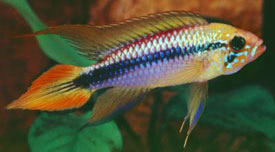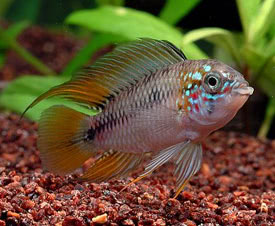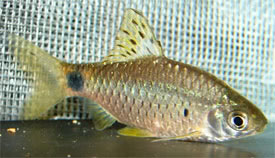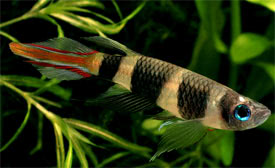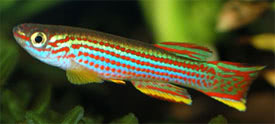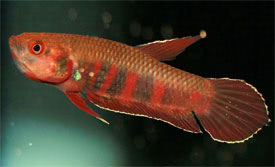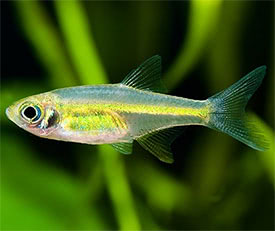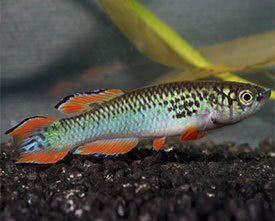
 Magyarul / Hungarian
Magyarul / Hungarian
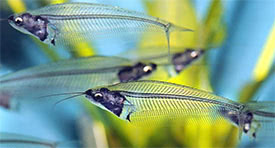
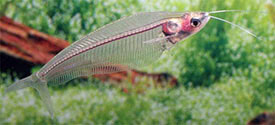

- Scientific name: Kryptopterus vitreolus
- Synonyms: -
- Common name: Asian Glass Catfish, Glass catfish, Ghost catfish
- Group: Catfishes
- Habitat: Asia; Thailand.
- Size: 7-8 cm
- Biotope: Found in coastal rivers of Southeastern Thailand, usually in slow-moving blackwaters.
- Social behavior: A peaceful and timid community fish that should be kept in a shoal of at least six fish. Do not combine with large, aggressive species. Usually swims in the midwater.
- Diet: Omnivorous; In nature it eats small invertebrates and zooplankton. It will accept dried foods in aquarium, but small live and frozen foods should be its main diet.
- Breeding: Not successful in aquarium.
- Tank: Minimum 120 litres
- Population: 6 fish for 120 litres
- Decoration: A cover of floating plants is recommended to dim the light. Use dark substrate, and add some dried leaf litter to the tank.
- Temperature: 20-26 °C
- pH: 5,5-6,5
- Hardness: 1-10 NK°
- Lifespan: 6-8 years
Description: Asian Glass Catfish is very unique and interesting catfish, which is scaleless and lacks body pigment, thus making the body transparent. The internal organs and backbone are clearly visible. The fish is allegedly bred commercially in Southeast Asia, perhaps with hormone injections, but usually wild-caught fish are likely the norm in the aquarium trade. This species has been available in the trade for decades, but it has long been identified in aquarium literature as Kryptopterus bicirrhis, or more recently Kryptopterus minor. The study indicates that the glass catfish is an unnamed species distinct from either, which the scientists describe here as Kryptopterus vitreolus. Kryptopterus vitreolus is known from river drainages in peninsular and southeastern Thailand. It is distinguished from congeners in having a combination of: transparent body in life, maxillary barbels reaching beyond the base of the first anal-fin, dorsal profile with a pronounced nuchal concavity, snout length 29–35% head length (HL), eye diameter 28–34% HL, slender body (depth at anus 16–20% standard length (SL)) and caudal peduncle (depth 4–7% SL), 14–18 rakers on the first gill arch, and 48–55 anal-fin rays.
The difference between male and female is not visible. Breeding is unreported in aquarium.










